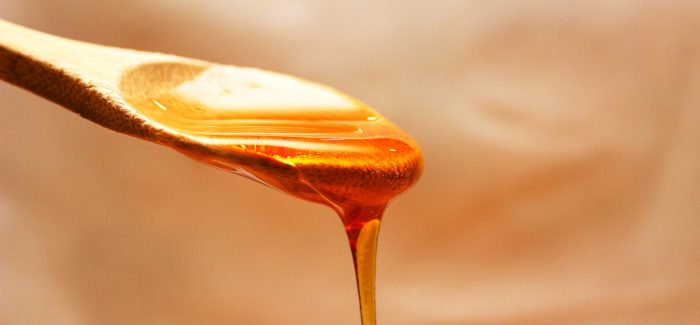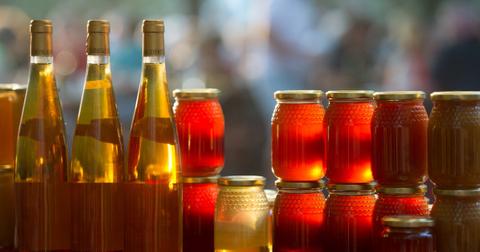From yadkinripple.com
By Bill Colvard
It’s a shame that the tradition of a Christmas Pudding never quite
caught on in the United States. It’s not that Americans aren’t aware of
Christmas pudding, or plum pudding, as it’s sometimes called. We’ve all
seen Dickens “A Christmas Carol” way too many times for that. But still,
a lot of us have never eaten one. And that’s unfortunate.
Christmas puddings have been around at least since the Middle Ages
when they were boiled in cloth bags, and there are as many recipes as
there are families who make them, but two elements never change: dried
fruit and plenty of alcohol. Currants, raisins and prunes are the most
usual dried fruit. In fact, the name plum pudding comes from raisins,
which were called plums in pre-Victorian England. Port, sherry, mulled
wine, rum and brandy are the most common forms of alcohol used in
Christmas puddings, but it is really surprising that mead, which is just
as “Merry Olde England” as Christmas pudding itself, is rarely used.
That, too, is unfortunate.
Besides the history of Christmas pudding and mead being so
compatible, the taste is not merely compatible, it’s a marriage made in
heaven.
Mead, which in its purest form is honey and water fermented into a
beverage that is essentially honey wine, predates medieval times. It is
often claimed to be the first form of alcohol known to humans.
Sometimes, fruit, spices or herbs are added to create varying flavours.
Windsor Run Cellars in Hamptonville makes several meads, and their
“Honey Moon” golden mead, according to their website, “offers the
lingering richness of sweet wild flower honey, warmed by the addition of
our very own hand crafted liquor.” The description is accurate, and
Honey Moon’s flavor profile is perfect for Christmas pudding.
Windsor Run is a distillery as well as a winery, and also offers a
distilled spirit made from honey. Called “Killer Bee,” it is not only a
distilled spirit made from honey, but a distilled spirit made from the
honey of “Africanised” killer bees.
Again according to Windsor Run’s website, Killer Bee is “… a quite
smooth liquor, bearing a distinct honey aroma, and a subtle honey
flavor, which is altogether pleasant by itself in a glass or snifter,
while remaining an interesting and highly flexible mixing option.”
It turns out one of those mixing options is Christmas pudding.
Soaking the dried fruits destined for a Christmas pudding in Windsor
Run’s Honey Moon golden mead and then dousing the finished pudding with
Killer Bee for a glorious flambé has all the components of a spectacular
finale to your Christmas dinner.
Since the late Victorian period, it has been customary to prepare
Christmas pudding on the Sunday prior to the beginning of Advent, which
is four or five weeks before Christmas.
The prayer for that Sunday in the Church of England’s Book of Common
Prayer (as it was used from the 16th century, and still is in
traditional churches), reads like this:
“Stir up, we beseech thee, O Lord, the wills of thy faithful
people; that they, plenteously bringing forth the fruit of good works,
may by thee be plenteously rewarded; through Jesus Christ our Lord.
Amen.”
It must have seemed to Victorians that the church itself was
commanding them to “stir up” a pudding. The Sunday before Advent is
still known as “Stir Up Sunday.”
Everyone in the family, especially the children, should give the
pudding a stir to bring good luck in the following year, preferably
stirring from East to West, in honor of the direction in which the Magi
will soon be traveling.
It’s also customary to insert a sixpence into the pudding, and the
lucky recipient of the coin when the pudding is served, can expect to be
“plenteously rewarded” in the coming year. Hopefully, that reward will
be substantial enough to repair any dental damage resulting from
chomping into a sixpence. Other tokens are also known to have been
included in Christmas puddings, such as a tiny wishbone (to bring good
luck), a silver thimble (for thrift), or an anchor (to symbolize safe
harbor.) This tradition is totally optional. If you have any qualms
about extraneous coinage, Monopoly tokens or poultry bones threatening
the lives of your family, by all means, leave them out.
Unlike cooks in the United Kingdom and countries which formerly
comprised the British Empire, you may not have a pudding basin. You’ll
need one. Since only the upper classes had ovens back in the day,
Christmas puddings are steamed in a pot of boiling water on top of the
stove. The steaming requires many hours, and you need a vessel capable
of handling that.
You can buy one, but if you order it online, give it plenty of time
to be delivered. It’s probably traveling a good distance. Historically,
pudding basins were ceramic or metal, but are now sometimes plastic. The
plastic ones have the advantage of coming with a tight-fitting lid
which simplifies steaming and storage. But for an American who has never
experienced cooking something on the stove-top in a plastic container,
it is a harrowing five hours of constant worry that one’s glorious
pudding is, at any moment, collapsing into a puddle of molten plastic.
Ceramic vessels are less expensive but require a somewhat complex
structure of parchment paper, foil and kitchen string to cover the
basin, make it airtight, and lift it out of the boiling water. There are
plenty of YouTube videos that explain the process. It’s difficult to
explain, but once you’ve seen it, it’s easy to do.
You may already have a vessel that can be appropriated for steaming
your pudding. A stoneware or Pyrex bowl of the proper size and shape
could easily do the trick. Do NOT attempt to use a plastic bowl that
wasn’t expressly made for the purpose because it obviously will not
possesses the Christmas magic to defy the laws of physics and melting
points. Even with a purchased plastic pudding basin, place it on a
saucer or a steamer insert or something to keep it from touching the
bottom of your pot during steaming. Even Christmas magic needs a little
help.
When the big day comes, decorate your Christmas pudding with a sprig
of holly, just like Mrs. Cratchit did in “A Christmas Carol.” Mrs.
Cratchit was surprisingly nonchalant about strolling to the dinner table
bearing a flaming pudding doused in accelerant, considering the
prevalence of tenement fires in Victorian England. You should perhaps be
more careful. Be especially careful of dangly sleeves and long, flowy
hair.
There’s going to be plenty of drama without setting yourself or your
house on fire. And if you really love your guests, offer them a glass of
“Honey Moon” mead as a dessert wine.
Christmas Pudding
Serves 8-10
1-¼ cups currants
1 cup golden raisins
1 cup roughly chopped pitted prunes
¾ cup Windsor Run Cellars Honey Moon Mead
⅔ cup all-purpose flour
2-⅓ cups fresh breadcrumbs
14 tbsp. coarsely grated lard or vegetable shortening (freeze
overnight to make it easier to grate. Beef suet is traditionally used
and can be ordered online, but like a pudding basin, takes a long time
for delivery. Do not use butter. The melting point is too low.)
¾ cup dark brown sugar
1 tsp. ground cinnamon
¼ tsp. ground cloves
1 tsp. baking powder
grated zest of 1 lemon
3 large eggs
1 medium apple (peeled and grated)
2 tbsp. honey
½ cup Windsor Run Killer Bee Distilled Spirits (to flame the pudding)
Directions
You will need a 1.7 litre/3 pint/1-½ quart heatproof pudding basin, and also a sprig of holly to decorate.
Put the currants, golden raisins and scissored pitted prunes into a
bowl with the Mead, swill the bowl a bit, then cover with plastic wrap
and leave to steep overnight or for up to a week.
When the fruits have had their steeping time, put a large pan of water on to boil, and prepare your pudding basin for steaming.
In a large mixing bowl, combine all the remaining pudding ingredients (except the Killer Bee Spirits.)
Add the steeped fruits, scraping in all the Mead with a rubber
spatula, and mix to combine thoroughly, then fold in coins or charms if
using.
Scrape and press the mixture into the prepared pudding basin, squish
it down and put on the lid if you have one. Otherwise do the foil and
parchment paper origami explained above. Place in the pot of boiling
water with the water coming halfway up the basin and steam for 5 hours,
checking every now and again that the water hasn’t boiled down too much.
Once an hour is probably good.
When it has steamed for 5 hours, remove carefully and, when
manageable, unwrap the foil. If you have a tight-fitting lid, put it on.
If not, use foil to seal up the pudding as airtight as possible. Store
in a cool, dark place until Christmas Day. Every week or so, splash a
bit of Killer Bee Spirits over the top and seal it back up. You don’t
want the pudding to dry out. As long as it stays moist with liquor, it
won’t spoil.
On Christmas Day, steam again, this time for 3 hours.
To serve, remove from the steaming pot, take off the lid or covering,
put a plate on top, turn it upside down. Then remove the basin – and
you’re almost there.
Put the sprig of holly on top of the pudding, then heat the Killer
Bee Spirits in a small pan, and the minute it’s hot, but before it boils
– you don’t want the alcohol to burn off before you attempt to flambé
it — pour the hot Killer Bee Spirits over the pudding. Now light the
pudding, preferably with a long kitchen match. Remove the holly before
flaming if it makes you nervous. A healthy respect for fire and liquor’s
properties as an accelerant is a good thing.
Traditionally served with Hard Sauce, which you can easily make while
the pudding is steaming, but you may prefer whipped cream (use some
Mead instead of vanilla extract) or ice cream.
Make ahead: Make the Christmas pudding up to 6 weeks
ahead. Keep in a cool, dark place, periodically dousing with a bit of
Killer Bee. Then proceed as per the recipe on Christmas Day.
Freeze ahead: Make and freeze the Christmas pudding
for up to 1 year ahead. Thaw overnight at room temperature and proceed
as per the recipe on Christmas Day.
Hard Sauce
¼ pound butter (1 stick), at room temperature
6 to 8 tbsp. confectioners’ sugar
2 tbsp. (or more, to taste) Killer Bee Spirits
Cream the butter and sugar together thoroughly. Beat in the spirit, a
little at a time, until the mixture is quite smooth. Serve by spoonfuls
over individual slices of pudding.
https://www.yadkinripple.com/features/lifestyle/18544/christmas-pudding-and-mead-perfect-together
/cloudfront-ap-southeast-2.images.arcpublishing.com/nzme/IYTZ4O3BNUGEXD4DMIDTL56C6Q.jpg)
/cloudfront-ap-southeast-2.images.arcpublishing.com/nzme/27JAJL5WPA53BGYIQHRDZYBDH4.jpg)


